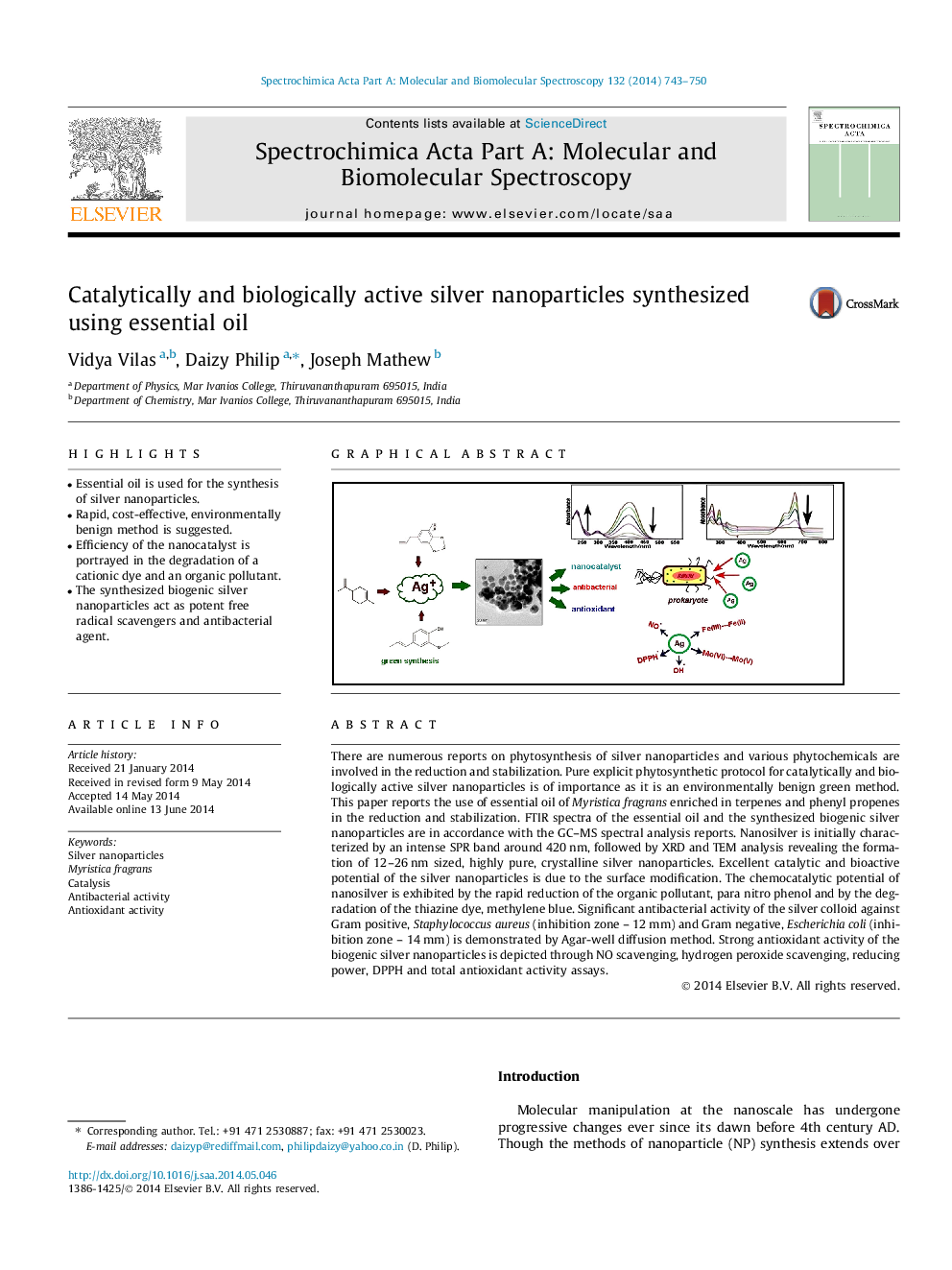| Article ID | Journal | Published Year | Pages | File Type |
|---|---|---|---|---|
| 1229640 | Spectrochimica Acta Part A: Molecular and Biomolecular Spectroscopy | 2014 | 8 Pages |
•Essential oil is used for the synthesis of silver nanoparticles.•Rapid, cost-effective, environmentally benign method is suggested.•Efficiency of the nanocatalyst is portrayed in the degradation of a cationic dye and an organic pollutant.•The synthesized biogenic silver nanoparticles act as potent free radical scavengers and antibacterial agent.
There are numerous reports on phytosynthesis of silver nanoparticles and various phytochemicals are involved in the reduction and stabilization. Pure explicit phytosynthetic protocol for catalytically and biologically active silver nanoparticles is of importance as it is an environmentally benign green method. This paper reports the use of essential oil of Myristica fragrans enriched in terpenes and phenyl propenes in the reduction and stabilization. FTIR spectra of the essential oil and the synthesized biogenic silver nanoparticles are in accordance with the GC–MS spectral analysis reports. Nanosilver is initially characterized by an intense SPR band around 420 nm, followed by XRD and TEM analysis revealing the formation of 12–26 nm sized, highly pure, crystalline silver nanoparticles. Excellent catalytic and bioactive potential of the silver nanoparticles is due to the surface modification. The chemocatalytic potential of nanosilver is exhibited by the rapid reduction of the organic pollutant, para nitro phenol and by the degradation of the thiazine dye, methylene blue. Significant antibacterial activity of the silver colloid against Gram positive, Staphylococcus aureus (inhibition zone – 12 mm) and Gram negative, Escherichia coli (inhibition zone – 14 mm) is demonstrated by Agar-well diffusion method. Strong antioxidant activity of the biogenic silver nanoparticles is depicted through NO scavenging, hydrogen peroxide scavenging, reducing power, DPPH and total antioxidant activity assays.
Graphical abstractFigure optionsDownload full-size imageDownload as PowerPoint slide
